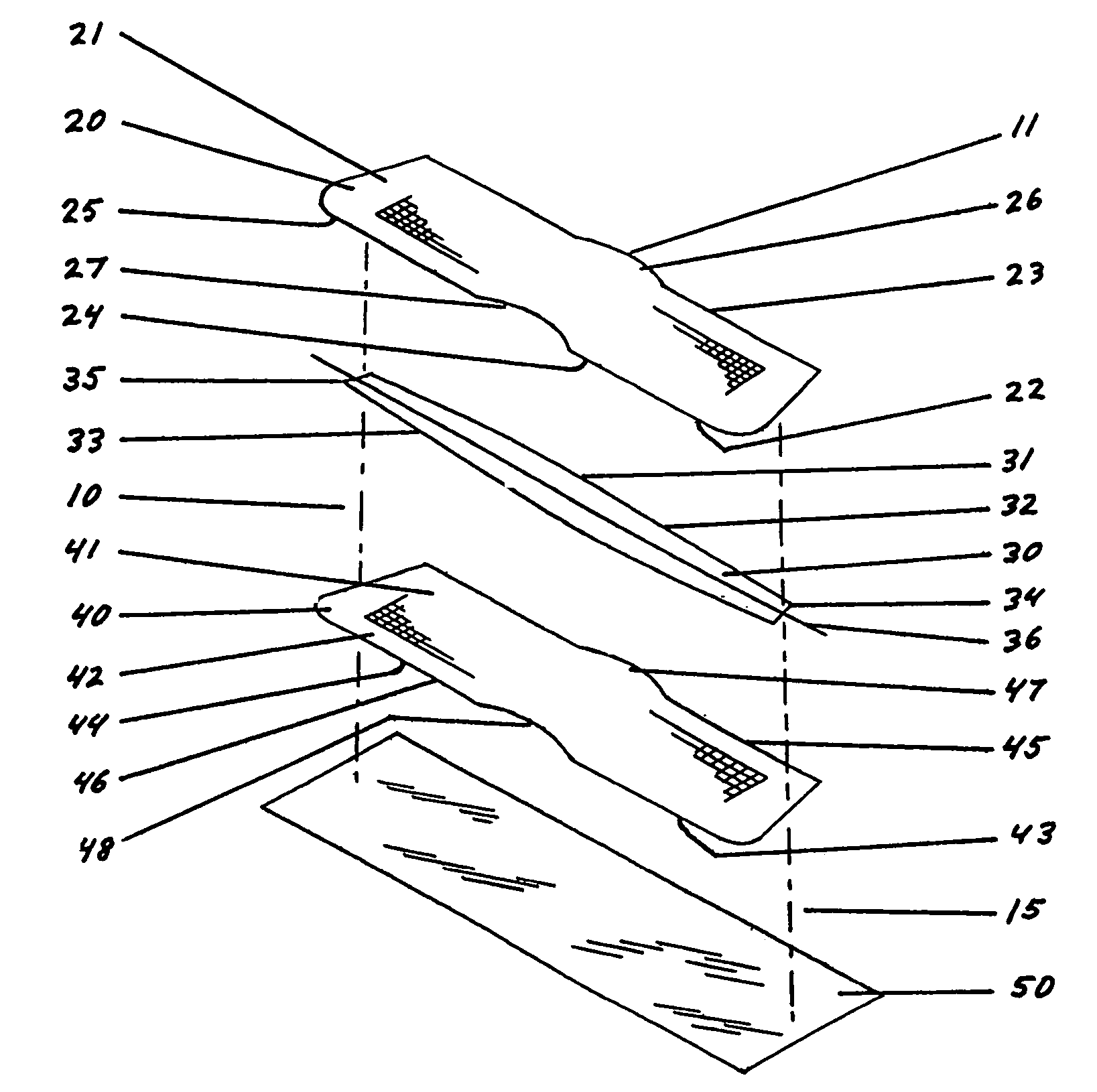Nasal strip with variable spring rate
a technology of spring rate and nasal strip, which is applied in the field of improving the design of nasal strips, can solve the problems of breathing difficulty and discomfort, loss of conditioning effects, irritation of throat and lungs, etc., and achieve the effect of improving the performance of the dilator
- Summary
- Abstract
- Description
- Claims
- Application Information
AI Technical Summary
Benefits of technology
Problems solved by technology
Method used
Image
Examples
Embodiment Construction
[0034]The specific improvements provided by this invention over the nasal dilator design described in Spanish Patent No. 289,561 to Iriarti are best seen in the attached drawings.
[0035]FIG. 1 shows the new nasal dilator 10 mounted on the nose 70 of the user. The nasal dilator 10 is designed so that the center 11 of the nasal dilator 10 is bent over the bridge 71 of the nose 70 and each end 12 and 13 of the nasal dilator 10 is positioned over the lateral wall 72 of the nose 70.
[0036]The lateral wall 72 of the nasal passage 75 is located in the soft tissue 73 above the nostril flare 74, which in turn is adjacent to the entrance of the nasal passage 75. When the nasal dilator 10 which contains a resilient band 30 is deformed from its normally planar state by being bent over the bridge 71 of the nose 70, the ends 12 and 13 which are attached to the lateral wall 72 of the nasal passage 75 tend to pull on the lateral wall 72 in a way that opens the nasal passage 75 and improves the air fl...
PUM
 Login to View More
Login to View More Abstract
Description
Claims
Application Information
 Login to View More
Login to View More - R&D
- Intellectual Property
- Life Sciences
- Materials
- Tech Scout
- Unparalleled Data Quality
- Higher Quality Content
- 60% Fewer Hallucinations
Browse by: Latest US Patents, China's latest patents, Technical Efficacy Thesaurus, Application Domain, Technology Topic, Popular Technical Reports.
© 2025 PatSnap. All rights reserved.Legal|Privacy policy|Modern Slavery Act Transparency Statement|Sitemap|About US| Contact US: help@patsnap.com



